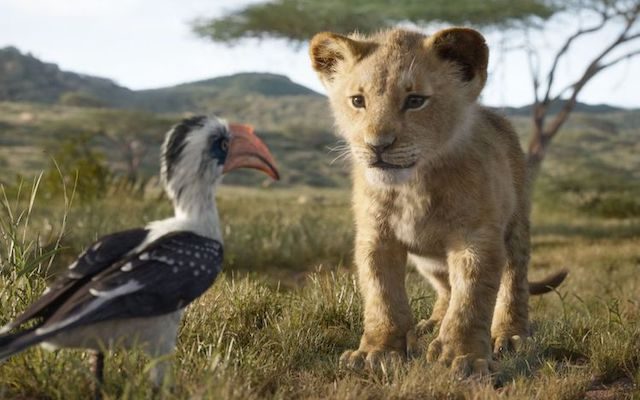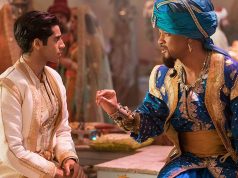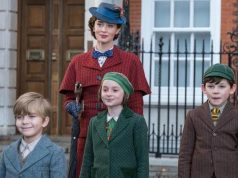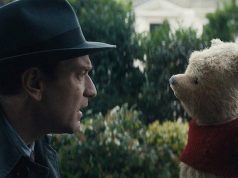
The idea behind this remake of “The Lion King” was to tell the same story but with real animals. That being impractical, however, they had to use computer-generated animals that merely look real and don’t do anything that real animals aren’t physically capable of. It’s the closest we’ll ever get to seeing “The Lion King” acted out by real lions!
Well, it turns out seeing “The Lion King” acted out by real lions is boring and sad. What director Jon Favreau (“The Jungle Book”) and everyone else at Disney evidently overlooked is that real animals don’t have expressive faces. Their bodies don’t do physical comedy. They don’t show anger or fear like cartoon animals do, because their bodies don’t subtly squash or stretch to convey what they’re feeling. When something bad happens and you cut to a reaction shot of a real animal, the look on its face is going to be almost exactly the same as it was before the bad thing happened, leaving the Kuleshov effect to do all the heavy lifting.
And so here is this spiritless, nearly shot-for-shot remake — with enough padding and slow pacing to make it 30 minutes longer than the original — that looks incredible and feels hollow. It’s like watching a nature documentary where the animals don’t seem quite right, causing an emotional glitch. If you saw a YouTube video of a lion struggling to climb a hill, you’d quickly grow firmly invested in his success. Seeing Mufasa do it had no effect on me, and I realized it was because, for all his realism, he couldn’t totally convince my brain to forget that he’s CGI.
Or it’s like listening to an audiobook of “The Lion King” while watching a slide show of African animals. You just have to use your imagination to pretend that what you’re seeing matches the intensity and emotion of what you’re hearing.
The disconnect between what we hear and what we see is profound, most obviously during “Can You Feel the Love Tonight?,” which is sung in the early afternoon and shows not a glimpse of anything approaching “the sweet caress of twilight” or a “romantic atmosphere.” The voice work is good and full of energy: JD McCrary as young Simba, James Earl Jones reprising his role as Mufasa, Chiwetel Ejiofor as Scar (he’s no Jeremy Irons, but who is?), John Oliver as Zazu the bird, Donald Glover as adult Simba, Beyoncé as adult Nala, Seth Rogen and Billy Eichner as Pumbaa and Timon. Their voices carry a wide range of emotions that are only hinted at visually.
The original film wasn’t very cartoony, so it’s interesting to discover how much difference there is between “not very” and “not at all.” Favreau’s fidelity to photorealism removes all of the magic and much of the humor — save for Rogen and Eichner, who have new dialogue that is funny on its own, regardless of what images accompany it. The animals’ movements are restricted to what their flesh-and-blood counterparts’ muscles and bodies can do. They talk, but their lips don’t form the letters; their voices might as well be voice-overs. A meerkat wouldn’t have access to the materials necessary to “dress in drag and do the hula” (as Timon once suggested he do to distract the hyenas), so that gag is replaced (with, admittedly, a really funny alternate).
Oh, and good news: Animals in Disney cartoons can say “fart” now!
But the opening “Circle of Life” sequence works beautifully, probably because there’s no dialogue to take us out of the reality. Elton John’s music remains powerful (Tim Rice’s lyrics remain pedestrian), and Hans Zimmer’s score actually benefits from being made grander. Apart from that, the movie seems to have been made just to impress us with the fact of its making. I spent a lot of the time thinking: OK, but why? I never came up with any answers besides the obviou$ one$.
C (1 hr., 58 min.; )





